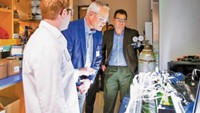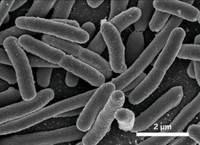Advertisement
Grab your lab coat. Let's get started
Welcome!
Welcome!
Create an account below to get 6 C&EN articles per month, receive newsletters and more - all free.
It seems this is your first time logging in online. Please enter the following information to continue.
As an ACS member you automatically get access to this site. All we need is few more details to create your reading experience.
Not you? Sign in with a different account.
Not you? Sign in with a different account.
ERROR 1
ERROR 1
ERROR 2
ERROR 2
ERROR 2
ERROR 2
ERROR 2
Password and Confirm password must match.
If you have an ACS member number, please enter it here so we can link this account to your membership. (optional)
ERROR 2
ACS values your privacy. By submitting your information, you are gaining access to C&EN and subscribing to our weekly newsletter. We use the information you provide to make your reading experience better, and we will never sell your data to third party members.
Biological Chemistry
Engineered yeast chummy with ethanol
December 11, 2006
| A version of this story appeared in
Volume 84, Issue 50
Here's a foamy welcome to an engineered yeast that can consume more sugar to make more alcohol, and still get up for work the next day. This new strain of yeast and the technique to make it, reported by Gregory Stephanopoulos and his colleagues at MIT, have potential applications in everything from biofuel production to medicine (Science 2006, 314, 1565). Typically, yeast can't withstand ethanol concentrations greater than about 10% by volume, which limits the amount of ethanol that can be produced in one run in a large fermentor. The researchers, however, used a novel approach to improve the yeast's viability in ethanol concentrations of up to 20%. Instead of trying to evolve the many genes involved in yeast glucose metabolism or in protection from ethanol damage, they engineered the basic transcriptional machinery that translates the genetic code into proteins. Three mutations in a protein that helps direct RNA polymerase to DNA had a ubiquitous impact on the expression of more than 100 genes, leading to the improved production and tolerance of ethanol.




Join the conversation
Contact the reporter
Submit a Letter to the Editor for publication
Engage with us on Twitter